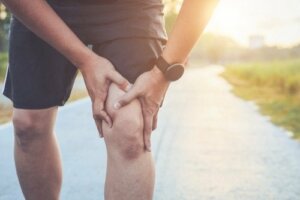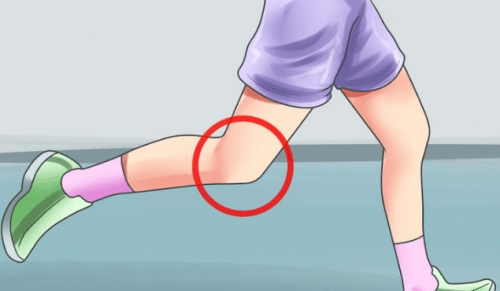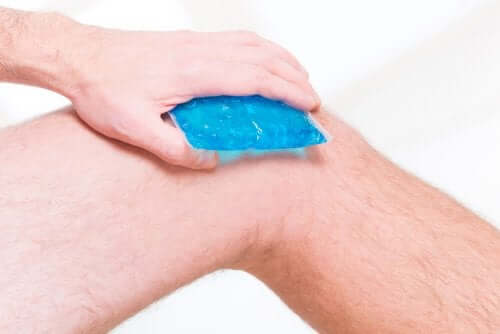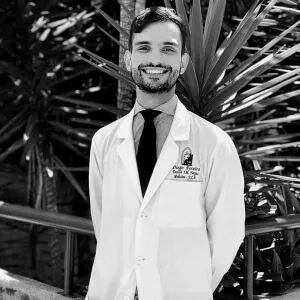What Is Sinding-Larsen-Johansson Syndrome?

Sinding-Larsen-Johansson syndrome involves pain in the lower part of the kneecap that occurs when practicing physical activity. The area becomes inflamed, and the individual experiences extreme pain upon touching the area.
It was described by Sinding-Larsen in 1921, and Johansson in 1922. This syndrome consists of a mechanical overload, similar to what occurs at the other end of the patellar tendon, called Osg0od-Schlatter disease.
In young people who are still growing, the physis houses the cells that cause the bone to grow. This area is weak, and is prone to a variety of disorders.
In Sinding-Larsen-Johansson (SLJ) syndrome, the repetitive movements common in sports harm the physis. As a result, the individual experiences pain in the area.
Diagnosing Sinding-Larsen-Johansson syndrome

Clinical evaluation is typically enough to make a diagnosis. The pain can cause loss of function in the individual. This usually manifests as being unable to jump, unable to kick the ball hard, etc. Cold weather usually makes it worse, and the condition improves with warm weather.
However, if the pain is intense the young person can experience a considerable limp, and other causes will need to be ruled out. In cases with frequent recurrence, very severe pain, or previous traumatic injuries, doctors should carry out an X-ray or ultrasound.
Risk factors for SLJ syndrome
Some of the risk factors for this condition are:
- Practicing intense sports
- Being overweight or obese
- Environmental factors, like the terrain
- Inadequate footwear
- Height
- Muscular condition and age
In patients with risk factors, recurring pain is very common. It’s important to get the correct diagnosis and to explain to the family that it’s a normal process until the individual stops growing.
Also read: How to Strengthen Knee Tendons and Ligaments
Treatment for SLJ syndrome
The goal of treatment is to alleviate pain while maintaining normal activities as much as possible. This is usually done through a combination of stretches, icing the area, and anti-inflammatory medications.
The stretching exercises should be done before playing sports. They generally involve the muscles in the front and back of the thigh, known as quadriceps and hamstrings.
After physical activity, you should apply ice to the area that hurts. Taking anti-inflammatory medication can help to manage the pain.
In cases where the pain is extremely intense and can’t be managed through the methods mentioned above, other treatment guidelines are given, such as:
1. Resting from sports
This condition improves immensely when individuals take a break from their usual sports. The patient can continue to go to school, but must decrease their athletic intensity for 10-15 days. By doing this, 90% of cases show improvement.
2. Physiotherapy treatment
In more complicated cases, or in young people with heightened athletic output, the physiotherapist can help to reduce inflammation of the area. They’ll sometimes recommend using functional bandages or straps to help manage pain.

3. Platelet-rich plasma
This kind of treatment is still being studied, since it’s efficacy in this setting is still unclear.
Platelets are obtained from the patient’s blood and injected into the area. This is a biological treatment and isn’t harmful to the patient. It can be an option for cases that are resistant to other treatment, or who experience a high recurrence.
4. Surgery
For this condition, it’s extremely uncommon to resort to surgery. It’s only used in cases with complications, and typically in adults.
You might be interested in: Best Exercises for Knee Pain
When can I resume physical activity?
You can do strengthening and balance exercises once the pain has subsided to try to prevent the pain from returning. Doctors recommend practicing alternative training, or doing activities like cycling or swimming, which don’t require running or jumping.
If the pain is minor, most young athletes can continue to practice sports without causing any damage. However, practicing sports with moderate or severe pain can worsen the condition and complicate treatment.
When you return to practicing sports, it might be a good idea to use a knee brace to cover the affected area. Your doctor will help you to decide how and when to fully resume physical activity safely.
All cited sources were thoroughly reviewed by our team to ensure their quality, reliability, currency, and validity. The bibliography of this article was considered reliable and of academic or scientific accuracy.
-
Kuehnast, M., Mahomed, N., & Mistry, B. (2012). Sinding-Larsen-Johansson syndrome. SAJCH South African Journal of Child Health. https://doi.org/10.7196/SAJCH.423.
-
Medlar, R. C., & Lyne, E. D. (1978). Sinding-Larsen-Johansson disease. Its etiology and natural history. Journal of Bone and Joint Surgery – Series A. https://doi.org/10.2106/00004623-197860080-00021.
-
Hall, R., Foss, K. B., Hewett, T. E., & Myer, G. D. (2015). Sport Specialization’s Association with an Increased Risk of Developing Anterior Knee Pain in Adolescent Female Athletes. Journal of Sport Rehabilitation. https://doi.org/10.1123/jsr.2013-0101.
This text is provided for informational purposes only and does not replace consultation with a professional. If in doubt, consult your specialist.









